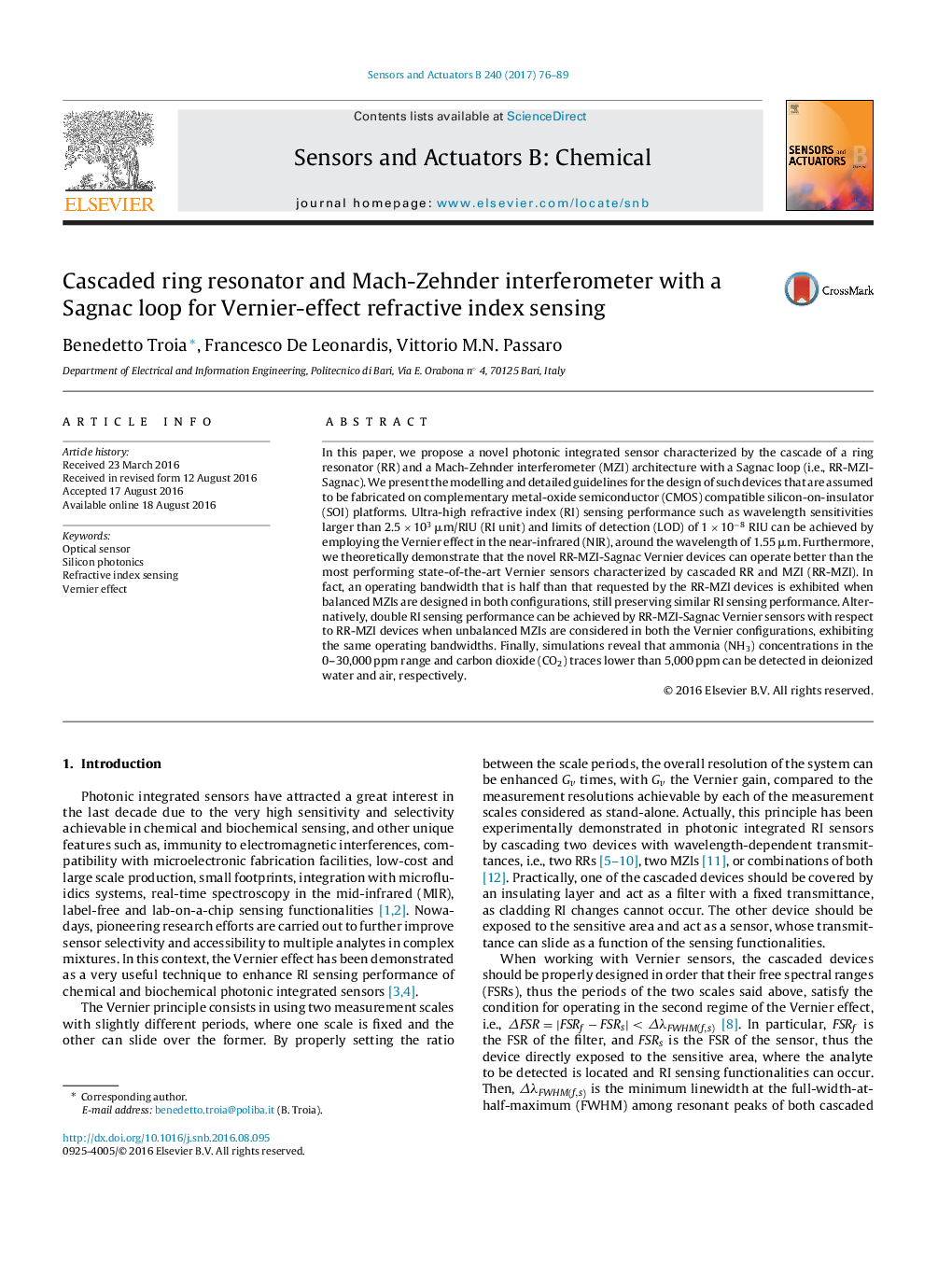| Article ID | Journal | Published Year | Pages | File Type |
|---|---|---|---|---|
| 5009554 | Sensors and Actuators B: Chemical | 2017 | 14 Pages |
â¢A new silicon photonic integrated sensor based on the Vernier effect is proposed.â¢Double performance can be achieved compared to state-of-the-art Vernier sensors.â¢Half the operating bandwidth of state-of-the-art Vernier sensors can be employed.â¢A rigorous and detailed modelling of the new Vernier devices is presented.â¢<30000 ppm of NH3 in water and less than 5000âppm of CO2 in air can be detected.
In this paper, we propose a novel photonic integrated sensor characterized by the cascade of a ring resonator (RR) and a Mach-Zehnder interferometer (MZI) architecture with a Sagnac loop (i.e., RR-MZI-Sagnac). We present the modelling and detailed guidelines for the design of such devices that are assumed to be fabricated on complementary metal-oxide semiconductor (CMOS) compatible silicon-on-insulator (SOI) platforms. Ultra-high refractive index (RI) sensing performance such as wavelength sensitivities larger than 2.5 Ã 103 μm/RIU (RI unit) and limits of detection (LOD) of 1 Ã 10â8 RIU can be achieved by employing the Vernier effect in the near-infrared (NIR), around the wavelength of 1.55 μm. Furthermore, we theoretically demonstrate that the novel RR-MZI-Sagnac Vernier devices can operate better than the most performing state-of-the-art Vernier sensors characterized by cascaded RR and MZI (RR-MZI). In fact, an operating bandwidth that is half than that requested by the RR-MZI devices is exhibited when balanced MZIs are designed in both configurations, still preserving similar RI sensing performance. Alternatively, double RI sensing performance can be achieved by RR-MZI-Sagnac Vernier sensors with respect to RR-MZI devices when unbalanced MZIs are considered in both the Vernier configurations, exhibiting the same operating bandwidths. Finally, simulations reveal that ammonia (NH3) concentrations in the 0-30,000 ppm range and carbon dioxide (CO2) traces lower than 5,000 ppm can be detected in deionized water and air, respectively.
